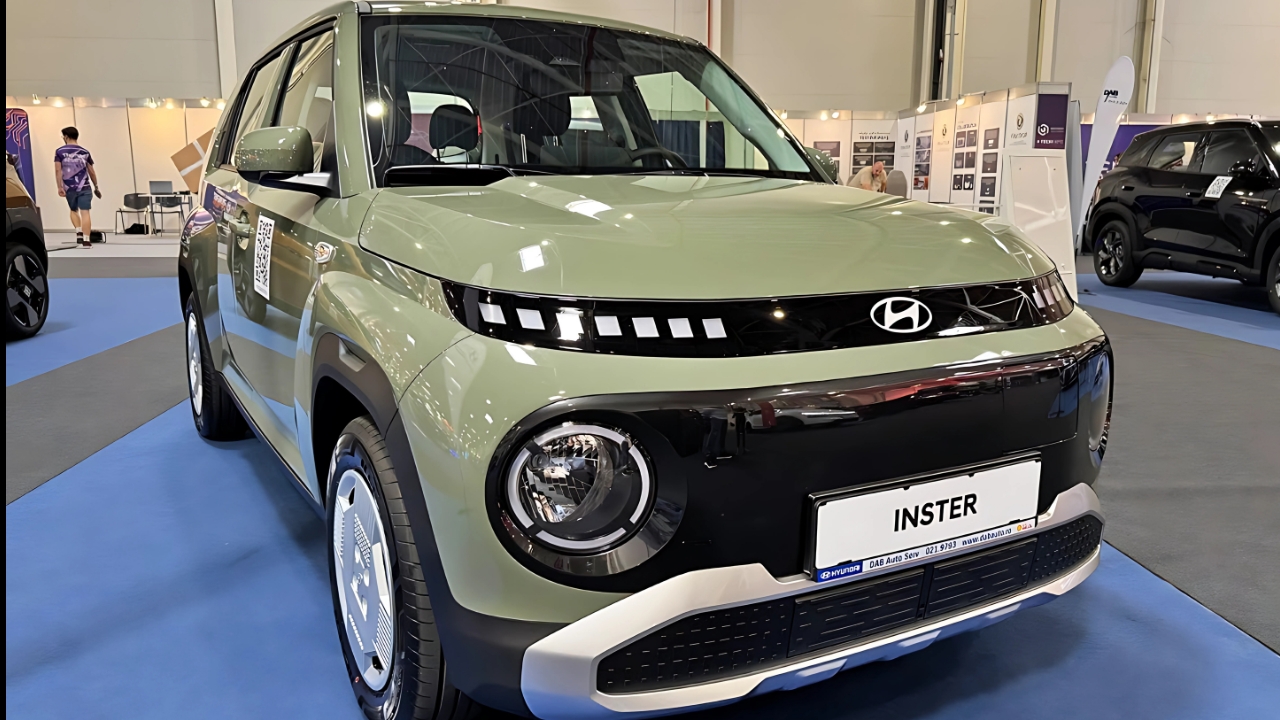Meet the car that’s already making waves before most Australians have even seen one. The 2025 Hyundai Inster has just landed on our shores, and it’s bringing something different to the electric vehicle conversation. This isn’t your typical family SUV – it’s a pint-sized charmer that’s already been crowned World Electric Vehicle of the Year.
But here’s the thing: the Inster isn’t trying to be everything to everyone. Instead, it’s laser-focused on being the perfect city companion, second car, or first electric vehicle for those who want something with personality.
![]()
What Makes the Inster Special?
Walking up to the Inster for the first time is genuinely surprising. At just 3.8 metres long, it’s smaller than most cars you see on Australian roads today, yet somehow it doesn’t feel tiny or compromised. The design is unapologetically cute – think of it as the friendly neighbor of the EV world.
The really clever bit happens when you open the doors. Despite those compact dimensions, the interior feels remarkably spacious. How? The flat floor (no transmission tunnel needed in an EV) creates an airy feel, and the 2.58-metre wheelbase is surprisingly generous for such a short car.
Three Variants to Choose From
Hyundai isn’t overwhelming buyers with options. The lineup is refreshingly simple:
| Variant | Price | Battery | Range | Power |
|---|---|---|---|---|
| Standard Range | $39,000 + ORCs | 42kWh | 327km | 71kW |
| Extended Range | $42,500 + ORCs | 49kWh | 360km | 84kW |
| Cross | $45,000 + ORCs | 49kWh | 293km* | 84kW |
*Range varies with roof basket option
Living With the Inster
City Life Champion
This is where the Inster truly shines. Parking in tight city spots? Easy. Zipping through traffic? No problems. The steering is surprisingly weighted for such a small car, giving it a mature feel that belies its dimensions.
Real-world testing shows the efficiency claims aren’t just marketing speak. Drivers are regularly achieving better than the official consumption figures, with some seeing as little as 9.8kWh/100km in urban driving – that’s impressive even by EV standards.
Interior Cleverness
Step inside and you’ll discover why reviewers keep using words like “ingenious” and “space-efficient.” The front seats can slide and recline extensively, while the rear seats (yes, there are four proper seats) slide forward and back to optimize either passenger space or cargo room.
The Cross variant takes this flexibility further with front seats that fold completely flat – perfect for camping adventures or loading longer items. It’s the kind of practical thinking that makes you wonder why other manufacturers haven’t thought of it.
Technology That Actually Works
Screen Time, But Not Too Much
The Inster strikes a nice balance between digital and physical controls. You get dual 10.25-inch displays – one for the driver, one for infotainment – but Hyundai has kept actual buttons for climate control and other frequently used functions. It’s a refreshing approach in an era where everything seems to be migrating to touchscreens.
Apple CarPlay and Android Auto come standard, along with wireless phone charging and Hyundai’s Bluelink connected services with a five-year complimentary subscription.
Safety First
Despite its compact size, the Inster doesn’t skimp on safety tech. Seven airbags, including a front-center airbag, come standard. The Smartsense suite includes blind-spot monitoring, forward collision avoidance, and lane-keeping assistance.
While ANCAP testing isn’t complete yet, the comprehensive safety package suggests a strong rating is likely.
The Elephant in the Room: Price
Let’s address the obvious question. At $39,000 starting price, the Inster costs nearly double what you’d pay for Hyundai’s petrol-powered Venue. It’s also pricier than some Chinese EVs like the BYD Dolphin, which starts around $30,000.
But here’s where value becomes subjective. The Inster offers build quality, refinement, and dealer network support that some buyers will happily pay extra for. It’s also backed by Hyundai’s five-year unlimited-kilometer warranty, soon to become seven years.
Real-World Ownership
Running Costs
Service intervals are generous at 24 months or 30,000km, with capped-price servicing available. The first quoted services come in at around $665 each. The high-voltage battery gets its own eight-year, 160,000km warranty.
Charging and Range
The Standard Range’s 327km might sound modest, but remember this car’s intended use. For daily city driving and weekend trips, it’s typically more than adequate. The Extended Range’s 360km opens up more regional driving possibilities.
DC fast charging peaks at 85kW – not the fastest available, but reasonable for a car this size. More importantly, the efficiency means you’ll be charging less frequently than with larger, thirstier EVs.
Who Should Consider the Inster?
The Inster makes most sense for urban dwellers, empty nesters, or families wanting a characterful second car. It’s perfect for people who appreciate design, want electric driving without the complexity of a larger EV, or simply want something that stands out from the automotive crowd.
It’s less suitable for families needing regular five-seat transport or those frequently covering long distances. But for its intended audience, the Inster delivers exactly what’s promised: efficient, enjoyable urban electric driving with personality to spare.
The 2025 Hyundai Inster arrives in Australia as something genuinely different in the EV space. Yes, you can buy bigger or cheaper electric cars, but few combine the Inster’s distinctive character, impressive efficiency, and thoughtful design in such a compact package.
Frequently Asked Questions
Q: Is the Inster suitable for highway driving?
A: While primarily designed for city use, the Inster handles highway speeds comfortably, though wind noise increases at higher speeds due to its upright design.
Q: How long does it take to charge?
A: On a home AC wallbox (7kW), expect around 6-7 hours for a full charge. DC fast charging to 80% takes approximately 30-45 minutes.
Q: Can adults fit in the back seats?
A: Yes, the sliding rear seats can accommodate adults for shorter trips, though taller passengers will prefer the front seats for longer journeys.
